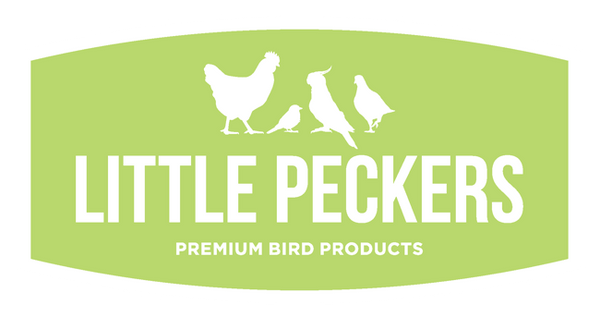Lovebirds, also called Agapornis, are a type of small parrot weighing between 37 and 58 grams. The species is native to Madagascar and lives in flocks on the savannah and the edges of woodland. Birds typically live between ten and fifteen years and produce clutches of four to six offspring. The species is famous all over the world for its colourful plumage.
Types of Lovebirds
There are several popular species of lovebird:
· Rosy-faced lovebird
The Rosy-faced lovebird - also called the peach-faced lovebird - is instantly recognisable for the peachy colouration on its face and upper part of the chest. The bird is native to southwestern Africa, particularly in the region around the Namib desert. Adults weigh around 55 grams, making this one of the larger varieties of lovebird. Members of the species typically form groups, making them a highly sociable animal. Their chirp is loud and consistent.
· Fischer’s lovebird
Fischer lovebirds have a characteristic parrot-like look and live mostly in nature reserves. Current estimates suggest that there are more than ten million individuals worldwide, making this one of the most abundant birds on the planet. Westerners first discovered the parrot in the late nineteenth century and then began breeding them in the 1920s. The species gets its name from the German explorer who first found them, Gustav Fischer.
· Lilian’s lovebird
Lilian’s lovebird - also called the Nyasa lovebird - is one of the lightest of all Agapornis, weighing in at around 37 grams, and the smallest parrot on mainland Africa. Adults grow to about 130 mm long and are dark green except for black wingtips, yellow plumage around their neck and characteristic red face. These birds typically only reproduce in the wild. Efforts at domesticated breeding have so far largely failed.
· Red-headed lovebird
The red-headed lovebird lives patchily across the African rainforest. Sometimes called the red-faced lovebird, this species is entirely green except the prominent red plumage that encircles the beak and fans outwards towards the inside edge of the eyes. Again, these birds are difficult to breed in captivity because of the need to keep the temperature of the nest chamber a consistent 27 C. They are also highly anxious by nature and will not mate unless they feel entirely relaxed. The bird is recognisable from other orange-faced species because of its unusual grey feet. Males tend to have redder faces than females.
· Black-winged lovebird
Black-winged lovebirds are one of the largest species of lovebird in Africa, weighing around 58 grams and measuring 165mm from beak to the tip of the tail. Also known as the Abyssinian lovebird, these small parrots are easily identified by their deep red beaks. The male of the species has a red forehead while the female is entirely green, save for the beak. Black-winged lovebirds live primarily in Eritrea which borders on Ethiopia, close to the horn of Africa. The species is currently listed as “least concern” on the IUCN Red List, meaning that it is not presently endangered. Unlike many African lovebirds, the Abyssinian can tolerate cold temperatures and has been part of small-scale aviculture experiments.
Lovebirds Diet
In the wild, lovebirds eat a highly varied diet. Depending on which part of Africa they inhabit, they may consume grains, grasses, figs, corn, maise, and berries. Some of the foods that they eat are agricultural in origin, while others are naturally occurring.
Captive lovebirds eat specially produced bird feed, plus a variety of supplements. Owners will usually give a pellet formula plus diced veggies and fruits. In the past, owners would provide lovebirds multivitamin supplements as a substitute for real food. The trend today, however, is to let them derive micronutrients from whole foods.
The range of possible foods you can give lovebirds is extensive. Their diet is not particularly rigid. Owners should feel free to provide apples, grapes, pears, bananas, kiwi, endive, chickweed, radish, parsley, carrots, peas and field lettuce.
If the birds are laying, you may also want to provide ground oyster shell for the additional calcium, just in case you can’t get fortified food.
Where Can You Buy Lovebirds?
You can get lovebirds from two sources: either reputable bird traders or rehoming websites.
When viewing love birds for sale, remember that they are highly social birds that like the company of others. If possible, purchase birds as a pair or triplet so that they have friends to keep them company once they get back to your home.
Please note that lovebirds require time and dedication to create a proper environment for them. Provide space for flying and keep the floor of the cage clean.

